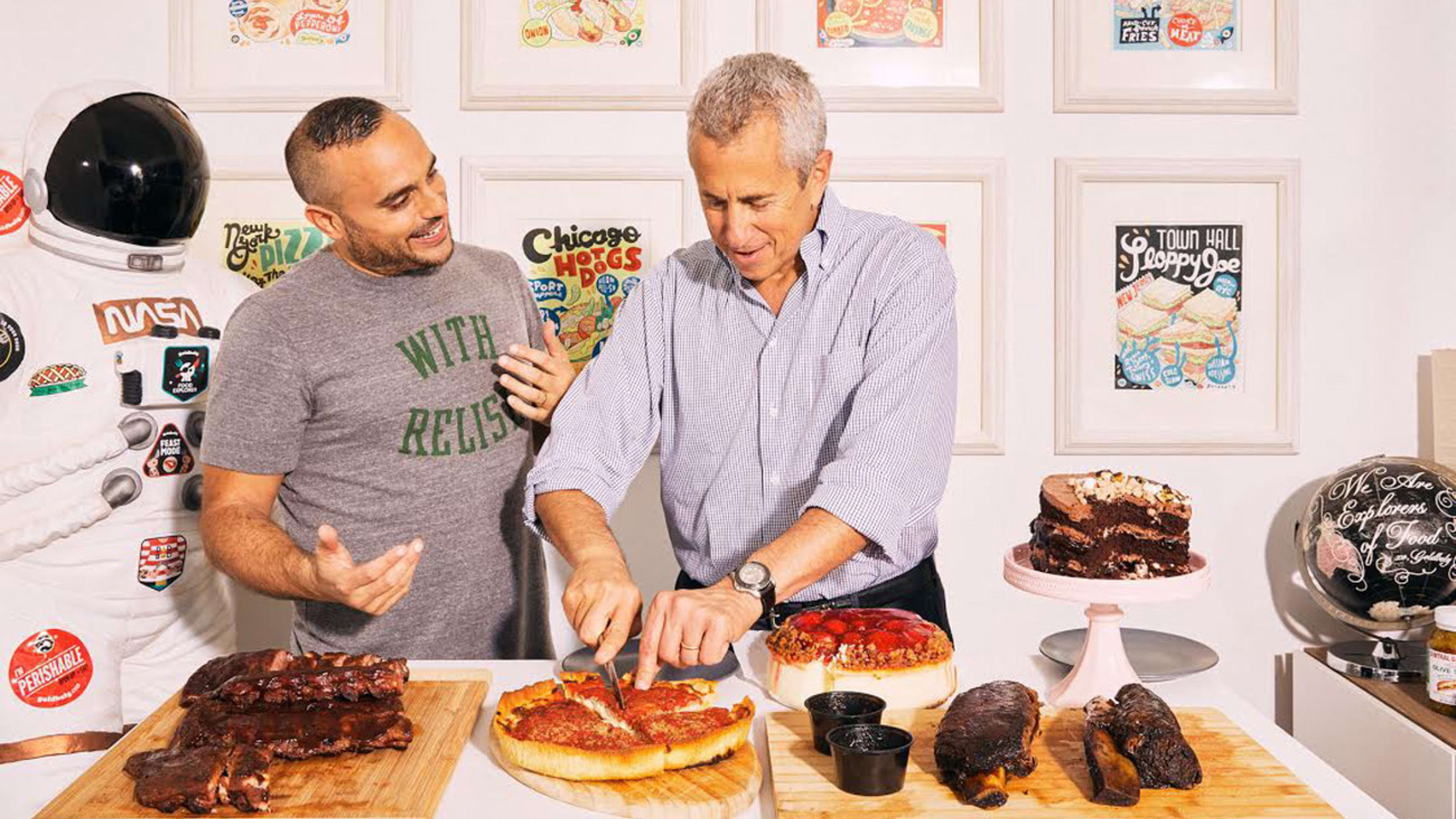Joe Ariel was a New York kid who ended up in the South, attending Vanderbilt University studying economics. The esteemed college’s meal plan was downright inedible. So he did what any irresponsible young foodie would do: He explored the cuisine of Nashville on his credit card.
Mouth-numbing Hot Chicken from Prince’s. Those crispy, pillowy biscuits with homemade jam from Loveless Cafe. Ariel fell in love with the food of the South, only to end up back in New York as a young professional, and find himself pining for those old flavors. So he did what any entrepreneur would do: He improvised.
“I would call some of these guys, and say, ‘Put it into a box, I’ll pay for FedEx overnight.’ Some of these restaurants sent me stuff,” says Ariel. “Reheating the food, I learned chefs knew how to get it so it tastes just like it does in the shop. That didn’t surprise me. What surprised me was the moment when I’d open the box, smell those smells, see the grease-stained menus, and I’d be transported to a different time.”

Food delivery has been one of the big user experience feats of the past decade. Uber Eats and Grubhub will get you just about any local meal delivered in an hour. Goldbelly’s goal is to take it to the next level, to connect mom-and-pop shops to eaters across the whole United States. “We’re not trying to get you the fast stuff, or the fanciest stuff, or the cheapest stuff,” says Ariel. “We’re trying to capture the best portion of the market.” But Goldbelly has to do so in an economically feasible fashion, while ensuring that a lobster roll mailed from 3,000 miles away shows up delectable–and without a tire mark down the middle. It’s a tremendous design challenge. But if Goldbelly can get it right, the company will give foodies yet another reason to never leave their couch.
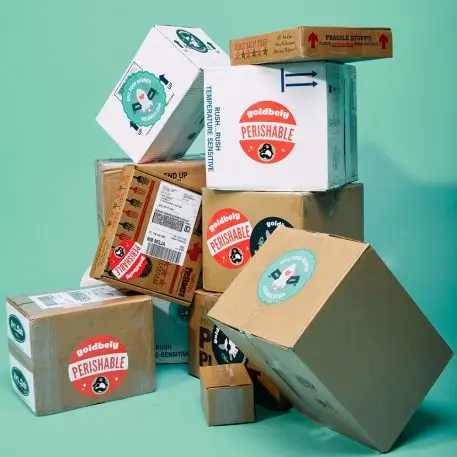
Mastering shipping logistics to give users a predictable experience
Shipping is a vexing problem for nearly any startup that sells goods. How do you ship things quickly and, more to the point, predictably, to ensure you meet customers’ expectations every time? Goldbelly has a proprietary algorithm that scans USPS, Fedex, and UPS to find the fastest, cheapest shipping option for every product. It accommodates for price fluctuations and weather, and handles rerouting as necessary. So once a customer places an order on Goldbelly, all the restaurant has to do is pack a box, and put on a shipping label; Goldbelly handles the rest. Depending on the product, shipping may be free or cost extra. In some cases, Goldbelly eats differences in shipping price fluctuations so that it presents customers with a more predictable, repeatable ordering experience.
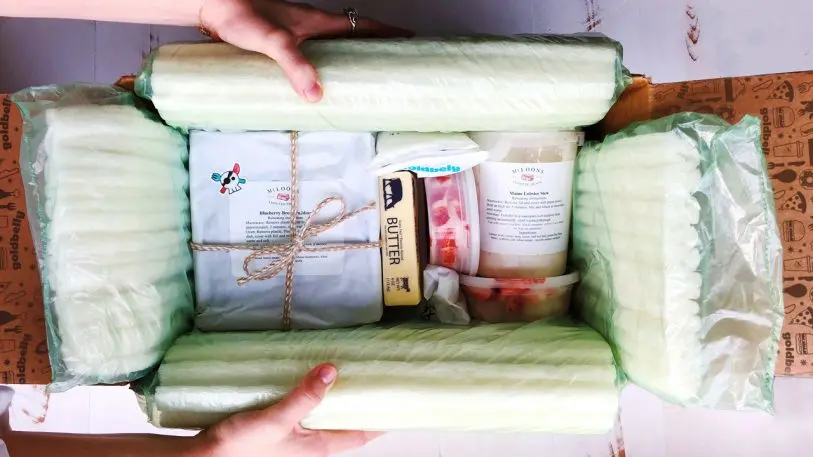
Packaging food so customers come back for more
Goldbelly’s other big experiential design challenge is around the food itself. Every food is different, and must be treated as such, to make it through the mail with as much integrity as possible.
“When we started, there were certain things I thought may be impossible for us to ship. But now, I think we can ship any item in the country,” says Ariel. “Ice cream seems like one that would be impossible. It’s not at all. You use dry ice. It has to be in a cooler. You order a six-pack. It can be mailed two- or three-day. It’s actually not hard to do!”
French fries were another tricky one to ship. Grubhub told me once, during a panel, that french fries are one of the biggest challenges in food delivery, because they steam in a bag on the way to your door and become soggy. Working with restaurants themselves, test shipment after test shipment, Goldbelly learned that the best method was to par cook them–basically cook the fries largely, but not entirely, through–and let the customer brown them in an oven.
What about fried chicken? “As you think through it, in the South, cold fried chicken is a delicacy. That was our starting point,” Ariel says. “Then testing, we tried [hot chicken] with the sauce on the side, with the sauce on. Now we ship it fully cooked, wrapped right after it cools down, with sauce on it. You put it in the oven for 15 to 20 minutes, and it crisps up because there’s so much oil on it.”
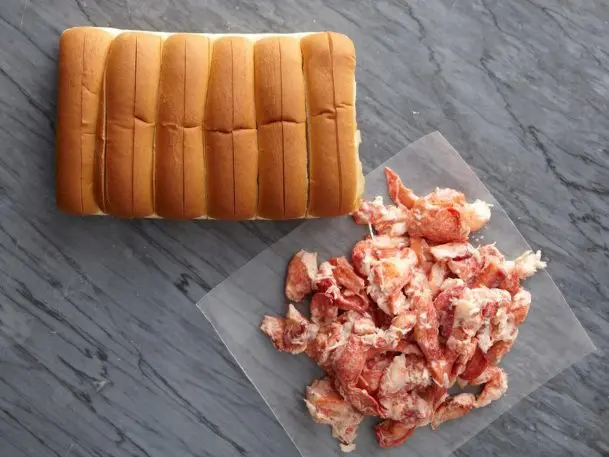
A playbook of best practices
Over time, Goldbelly has developed a playbook of best practices, based on the company’s own testing. All foods are divided into three categories–depending on whether it belongs in a pantry (like baked goods), the fridge (steaks and seafood), or the freezer (ice cream and pizza). This determines if something needs to be kept cold, and how cold to keep it. Stone crab and fresh tuna need to be cold, for instance–but if they freeze in transit, that affects the integrity of the fresh seafood, too. Indeed, fridge items are the most challenging for Goldbelly to ship because the temperature needs to hover around 40 degrees.
For pantry cakes and pies, temperature isn’t so much a concern, but they have to be stabilized in transit, lest they become a pile of goop and frosting. Goldbelly has developed proprietary packaging dubbed the “pie shipper,” that keeps these round desserts upright, insulating them while and stopping them from hitting the walls of the box.
Another strategy for keeping shipped food presentable is to ship items deconstructed rather than in ready-to-eat mode. Such is the case for sandwiches like Philly cheesesteaks and Maine lobster rolls. If a sandwich is sent whole, it gets soggy. And reheating it would just turn the mush into a hot mess.
When I ask Ariel what’s the hardest item to ship, he answers without hesitation: the Primanti Bros. sandwich. It’s a Great Depression-era meal out of Pittsburgh, with thick-cut Italian bread that’s piled high with meat, cheese, coleslaw, tomatoes, and fries. “That was one where it was like, ‘Are we going to be able to do this?'” Ariel recounts. “We got on the ground. We do test shipments. What we did was, we decomposed it and turned it into a kit.”
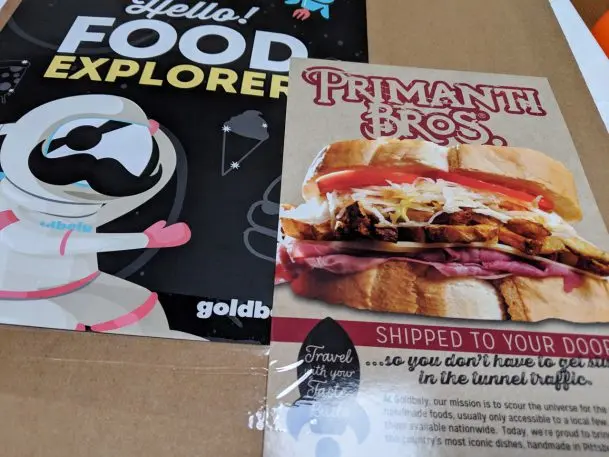
The case for $90 sandwiches
A week after our interview, a Primanti Bros. box arrives at my door. It’s a cardboard container with a giant sandwich outline drawn on the box. Opening it, I’m greeted with a notecard all about the sandwich itself, complete with its history and assembly instructions. I remove an inner styrofoam lid, and I find that the meat and cheese have been vacuum-packed. I’ll need to heat the meat on the stove, divide it into four portions, and top it with cheese right before serving. A large loaf of Italian bread is in a normal bakery bag and unsliced. The tomatoes are mine to cut, too–four slices apiece. The fries will need 30 minutes in the oven at 450 degrees F.
I read the instructions, which go so far as to explain the order each ingredient is layered on the bread. Jeez, I’ve got work to do–a surprising amount of work for a sandwich!
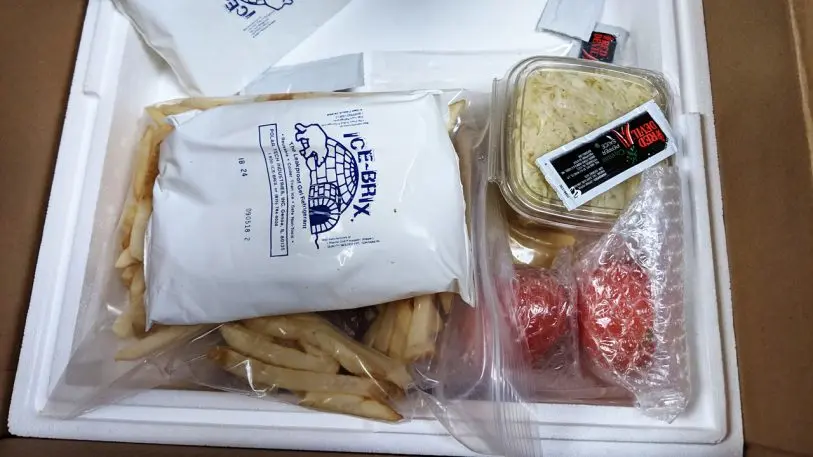
“The restaurant sets it up so much . . . and then it’s up to the user,” says Ariel. “Part of the fun is doing it how you like it.” I do enjoy the ritual, as it makes me anticipate this giant gut bomb I’m about to consume. But then again, I like to cook. At one point in the process, I do wonder if I should have just ordered a Milk Bar pie I could eat with a fork right out of the box.
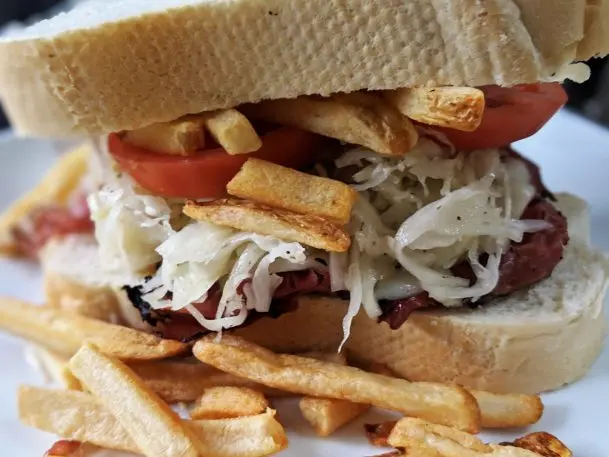
As for how the sandwich tasted: It’s a good sandwich. The pastrami is paper thin and loaded with flavor. The bread is a marshmallow that melts in my mouth. (And just an hour later, the spare slices had grown stale on the counter–no wonder the loaf comes whole.) The fries? Look, they still taste like oven fries for whatever reason, but they’re crispy enough to crack between my teeth. The red devil hot sauce on top complemented the pastrami in a way I’d never expect. And that sweet and sour vinegar coleslaw? Phenomenal.
I enjoyed the indulgence! Was it worth $90 for four sandwiches (compliments of Goldbelly)? Not to me or my fellow testers who wanted to know why I didn’t order a fancier lobster roll. But if this were a sandwich I grew up eating and had been jonesing for, I imagine it would have been a borderline spiritual experience. Because I’d estimate the flavors were replicated with 85% fidelity–plenty for your brain to fill in the gaps.
Goldbelly has been profitable in the past, according to Ariel, though the company’s $15 million in new funding suggests a more immediate focus on user and partner growth, instead of revenue. At a time when Grubhub, Uber Eats, and Amazon are all duking it out for the local delivery market, Goldbelly has discovered a promising niche–by slowly mastering the art of delivering a taste of your past to your door.
Recognize your brand’s excellence by applying to this year’s Brands That Matter Awards before the early-rate deadline, May 3.
